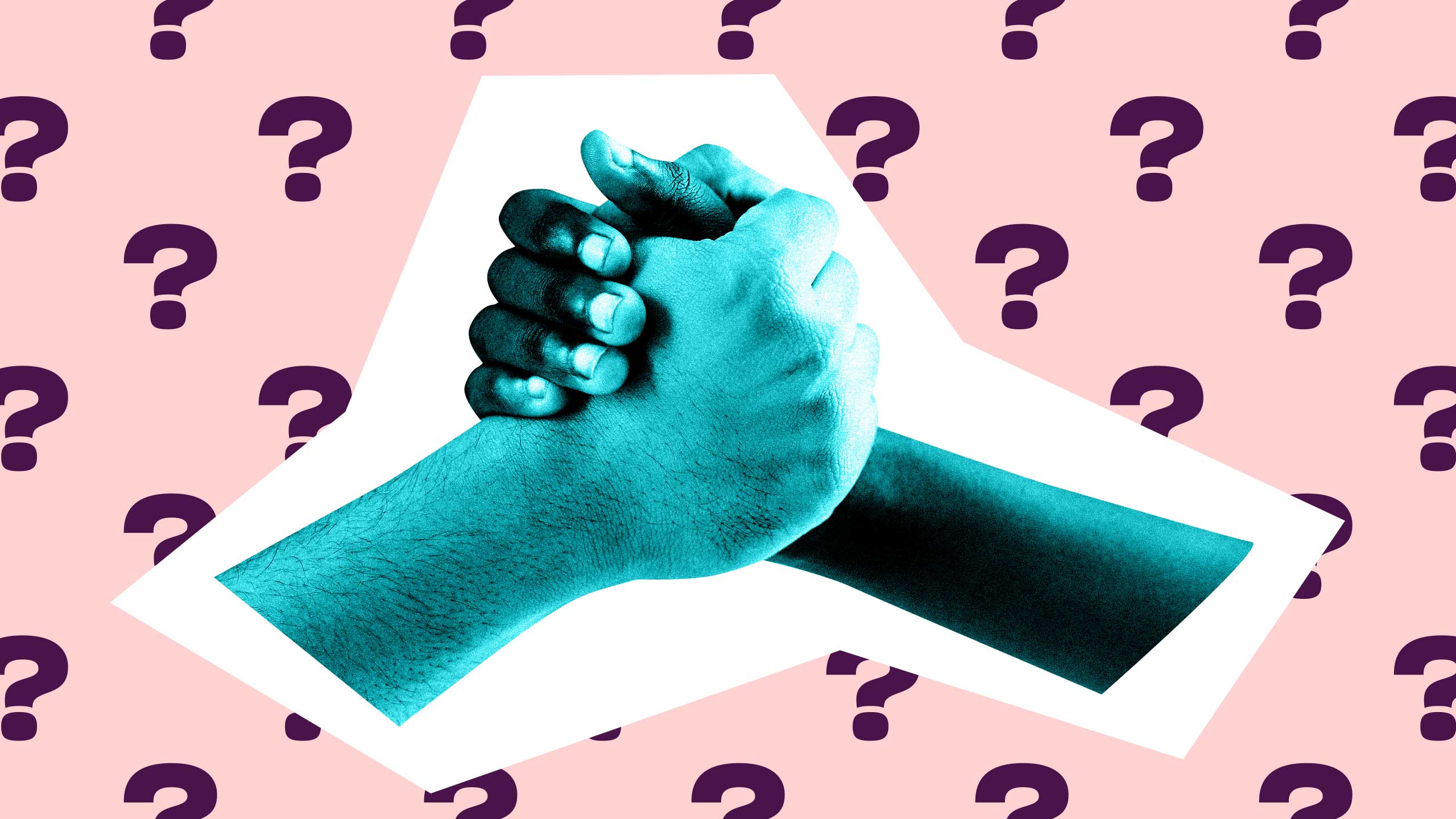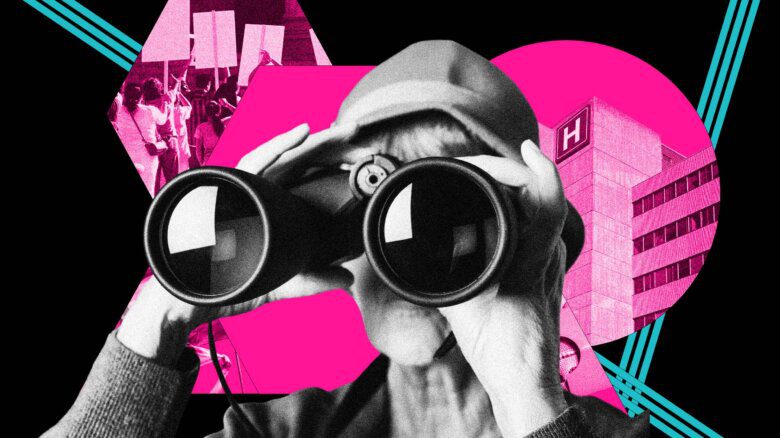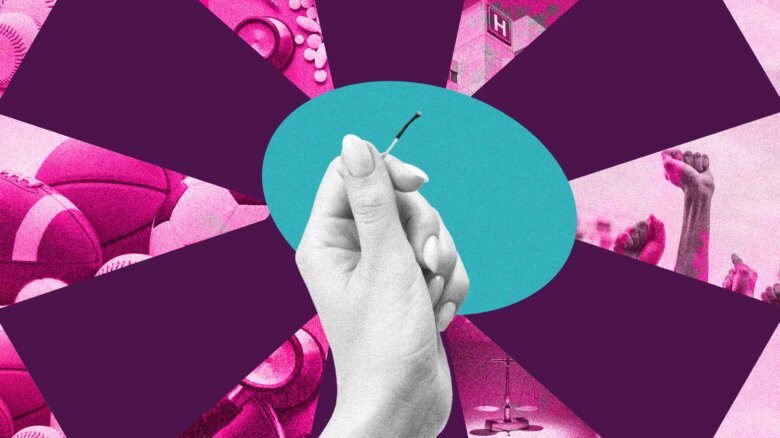LGBTQ2S+ people are all too familiar with depression and suicidality. Queer and trans youth are nearly six times more likely to consider suicide and seven times more likely to attempt it than their cis, straight counterparts.
Factors such as poverty, homelessness, social rejection and isolation affect many out queer youth.
Alex Abramovich is an independent scientist with the Institute for Mental Health Policy Research at Toronto’s Centre for Addiction and Mental Health (CAMH). His research aims to address the causes of mental illness and suicide among queer youth. Xtra sat down with Abramovich to discuss assessing risk, learning to drive and how increased access to gender affirming healthcare and housing are life-saving necessities.
What is suicidal ideation?
Suicidality is a term that we often use to include suicide attempts and suicidal ideation. So, if a person has thoughts of suicide, thoughts of harming themselves have a plan to attempt suicide—that would be considered suicidal ideation. There’s a range of thoughts that a person might have. It might be thoughts of not wanting to get out of bed, feeling like their life isn’t worth living, wanting to harm themselves.
And then, of course, a suicide attempt is different than thoughts. It’s a person’s actions and behaviours. When we say “suicidality,” that normally includes both suicidal ideation and suicide attempt. And we know that there are different factors that put a person at higher risk of experiencing those types of thoughts. Some people are more at risk than others.
In Canada, we know that about 4,000 Canadians die by suicide every year. So that’s about 11 people per day or so. I think it’s very important that prevention be something that we talk about and prioritize every day, rather than having just one day every year that’s devoted to suicide awareness.
What does prevention look like when we’re talking about LGBTQ2S+ folks specifically?
We know that queer and trans folks are at a much higher risk of suicide compared to heterosexual and cisgender individuals. Research found that 17 percent of lesbian, gay and bisexual adults had attempted suicide in their lifetime, compared to 2 percent of the general population.
Trans people face an even higher rate. Trans youth are six times more likely to attempt suicide compared to cisgender youth. Trans people who want but don’t have access to the means to medically transition are at the highest risk. We know that providing trans people with access to hormones and to gender-affirming care is actually a major protective factor against depression and suicide.
We also know that intersectionality plays a significant role in determining suicide risk, so racialized trans folks are at high risk because of the added burden of racism, for example. Same goes for those who are living with disabilities, those who are living in poverty. And then of course, if you have co-occurring mental health and substance use issues, that would put you at even higher risk.
When does someone need to start looking at getting help?
There’s so much stigma still around suicide. It’s very hard for a lot of people to talk about their feelings of suicide or self-harm. But I think that communication is absolutely key to creating respectful spaces where people can really talk about their mental health. There are many different warning signs that a person might be struggling. Some of them might be more obvious, and some of them might be less obvious. If somebody is talking about wanting to die, I think that’s a very clear warning sign right there. Or you might see someone expressing that they feel hopeless, or they feel like there’s no purpose in life. They might feel trapped, or they might feel like they’re a burden to other people.
You might notice an increase in alcohol or substance use. Or they might become withdrawn; they might feel isolated and don’t want to leave the house. If you have a friend or a loved one who’s experiencing any of the warning signs, it’s really important to offer help or to get help for them. The best thing that we can do for each other is to not judge one another when we talk about our mental health, because that allows people to speak openly and honestly. And it also creates respectful communication, where people can actually talk about these things rather than having to suffer alone.
What do I do if I notice these warning signs of a friend in crisis?
The number one thing is to create a safe space for people to speak openly about their mental health, and to also to encourage people to talk about how they’re feeling. So, ask questions, open up yourself. I think it really helps people when they can talk to someone who has gone through something similar. And especially within queer and trans communities, I think it’s very important to support one another. I work with young LGBTQ2S+ people who are experiencing homelessness. And suicide is something that comes up all the time. It’s really very alarming how high the rates of suicidality are among the population. And I know that for a lot of young people, they just want to talk to someone who they can relate to.
I think it’s important to be able to listen to the person who might be struggling, and to also to take them seriously not to judge or not to minimize their feelings. Sometimes we hear about people doing that, where it’s just like, “You’re not going to hurt yourself, you’re not going to kill yourself.” People make comments like that. If someone is struggling, take it seriously every time. I also think it’s important to just straight up ask a person, “Are you having thoughts of suicide?” People are often afraid to use the word suicide. You have to let them know that there’s help available. And then it’s important to encourage them to seek help from a doctor or from a mental health provider. You can also offer to go with them, because maybe it’s very scary to go on their own. You can say, “I can go with you, I can wait in the waiting room with you, I can be here when you make the phone call.”
You can also build a safety plan. A safety plan would be, “Who do I call if these feelings get stronger?”
Avoid leaving the person alone if they’re in crisis. You can stay on the phone with them, you make sure that they’re okay.
It’s also important to get help for yourself, to make sure that you also have support. We need to build peer support and help each other as a community, which I think is like one of our biggest strengths. Research shows us that peer support is actually a key protective factor against suicide, especially for trans people.
Some people fall through the cracks with the available support systems. So, for example, I’m Black, I’m queer. I’ve gone to seek help, including at CAMH, and I’ve been sent home multiple times. And I know that other people of colour across the country routinely struggle to access care. So, what can people of colour, especially, do when the field is not designed to protect us?
First of all, I’m very sorry to hear that. I’m sorry to hear that that happened at CAMH. I work at CAMH. I’ve obviously heard a lot of people talk about exactly what you just described. In the beginning, when I first started talking to you, I was talking about intersectionality, right? How people in the queer community might have increased risk of mental health issues or suicidality. It gets very easy to fall through the cracks if you’re queer and racialized. That’s because I think the majority of programs are designed to support a certain type of person. Housing programs, support services—they’re very much built for white, cisgender, heterosexual people, like so many things in this world. If you’re anything but a white cisgender, heterosexual person, your needs are not prioritized, and you’re not supported in the way that you should be.
For 15 years I’ve been working with queer and trans youth who are experiencing homelessness, and I’ve been advocating for a long time to really prioritize the needs of those youth. Even when we see a queer specific program, it’s not really designed to actually understand intersectionality or how a person who is racialized, for example, might experience racism and transphobia and homophobia all at the same time.
I think you described it very well. Why would you fall through the cracks? The designers of many programs don’t get it, they just do not understand why certain people might be at increased risk. And that’s why I think that it’s so important that support programs be population-based programs, for example an LGBTQ2S+-specific offering where they hire queer and trans people to work there and don’t hire a staff of all white people. It’s so important that when you go to access support, you see yourself reflected in the people who work there. That doesn’t happen enough. I’m not saying that, if you’re white, you can’t help a racialized person. But I do think that it’s very, very important that people see themselves reflected, and that we have that opportunity to offer that type of peer support.
Sometimes people die by suicide, even when steps are taken towards prevention. How can we take care of each other, like grieve together and move forward when these things happen?
One of the best ways that we can help each other is to support one another, to avoid being judgmental and to create safe spaces where we can openly talk about our feelings.
People often have a difficult time speaking about suicide for a variety of reasons associated with shame or stigma. By creating a society where we truly understand and respect that mental health is health, we make space for life-saving discussions.
If you have a friend who is struggling, reach out and ask them how they are doing. Especially during these difficult times, many people are feeling isolated and alone. It can make a big difference to reach out and show that you care.
How can a person cope with suicide grief?
It is important to seek support for yourself. There are many things that people can do to take care of their mental health, including prioritizing self-care, getting regular exercise and fresh air, eating healthy, drinking plenty of water, getting enough sleep and prioritizing healthy relationships and friendships.
Reach out to a friend or family member that you trust. Open and honest communication is key. There is support available and there are people who have been impacted by suicide that can help. There are a wide range of community supports and services, including anonymous help lines and virtual and in-person services which can help you deal with suicide grief. You don’t have to carry this alone.
If you need support, contact the Trans Lifeline at (877) 330-6366 in Canada, (877) 565-8860 in the United States. Or contact the Canada Suicide Prevention Service at (833) 456-4566, or the LGBT National Hotline in the US 888-843-4564.


 Why you can trust Xtra
Why you can trust Xtra


